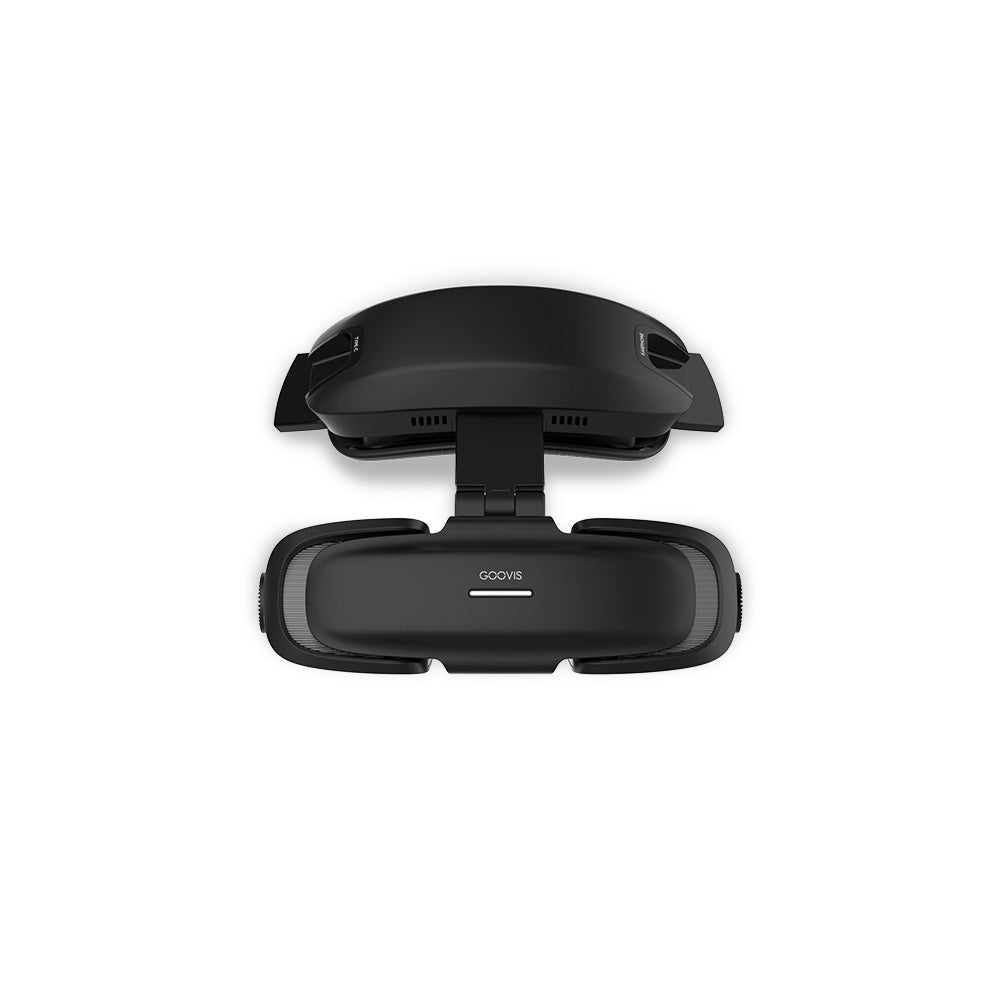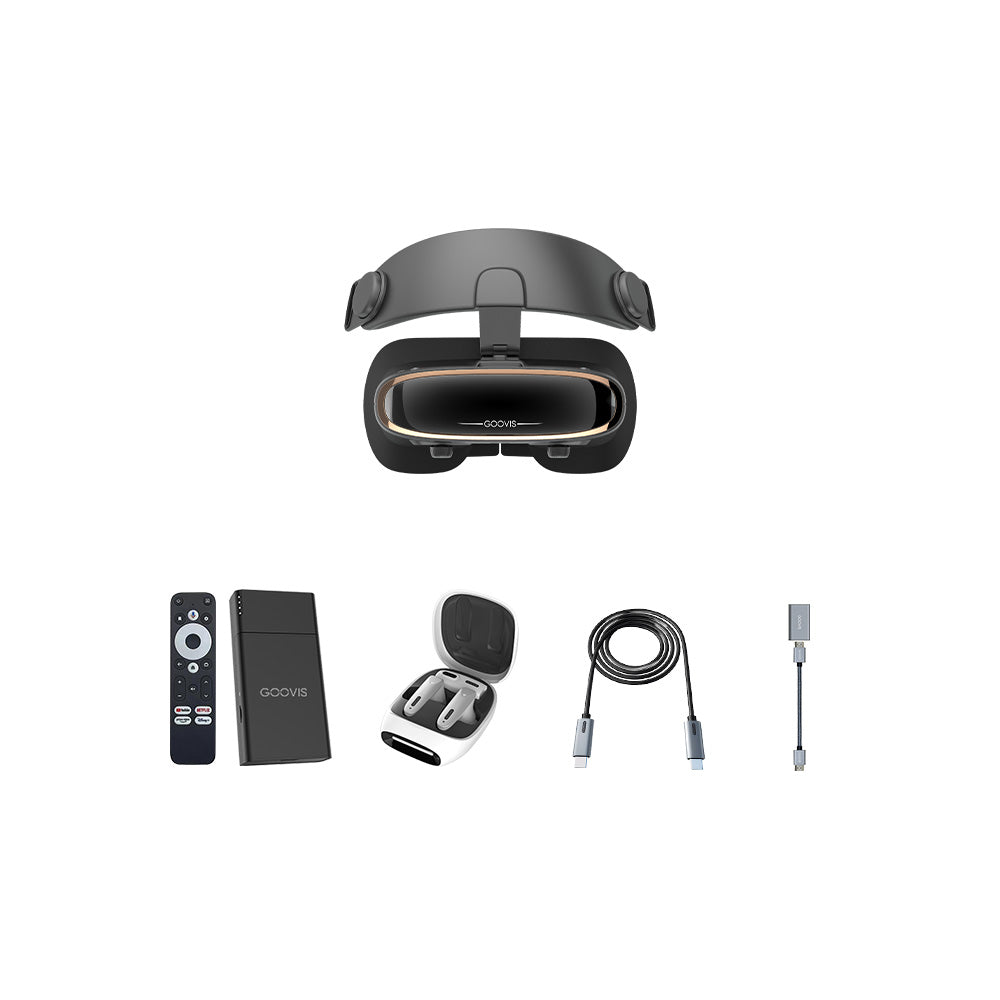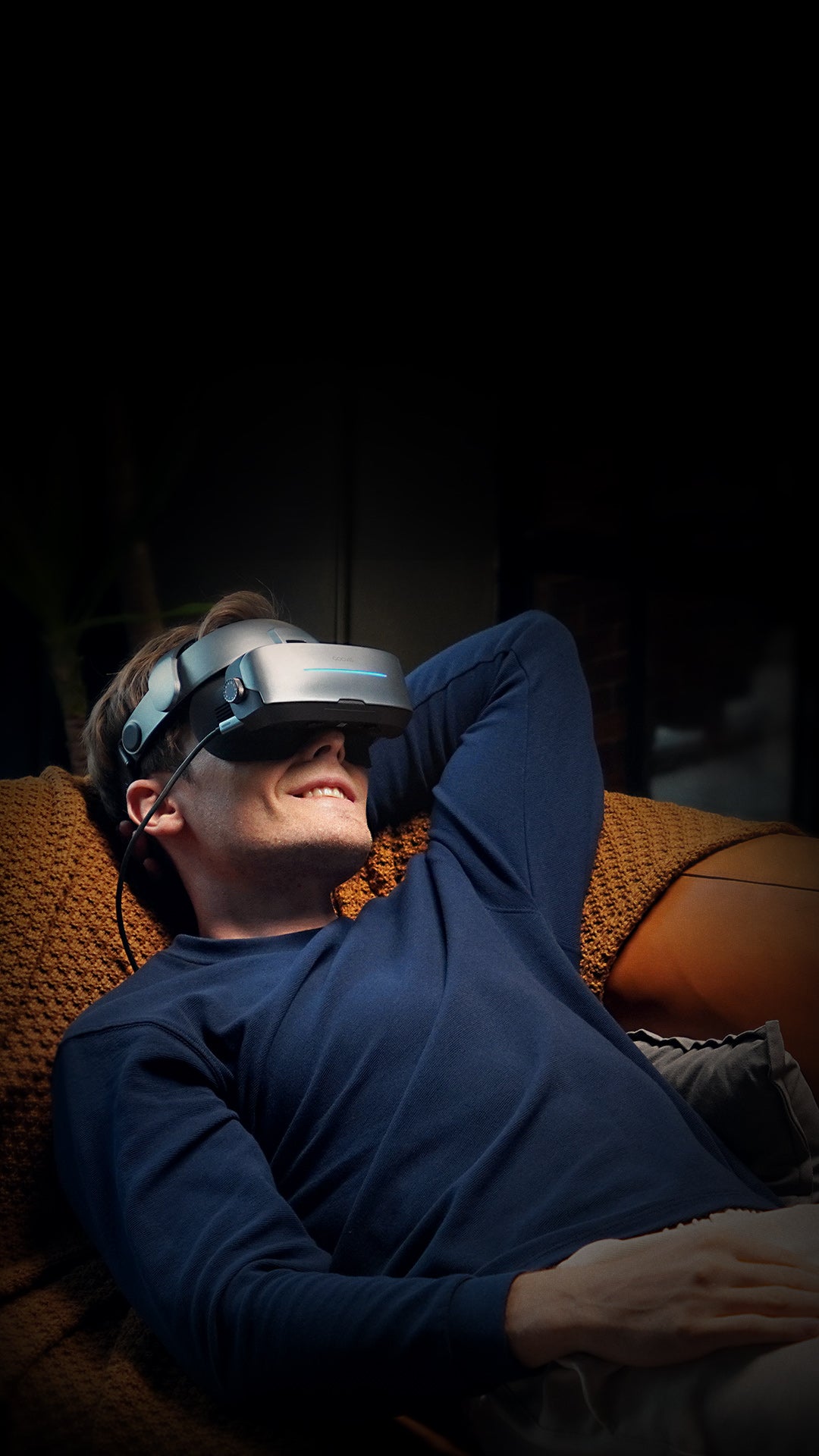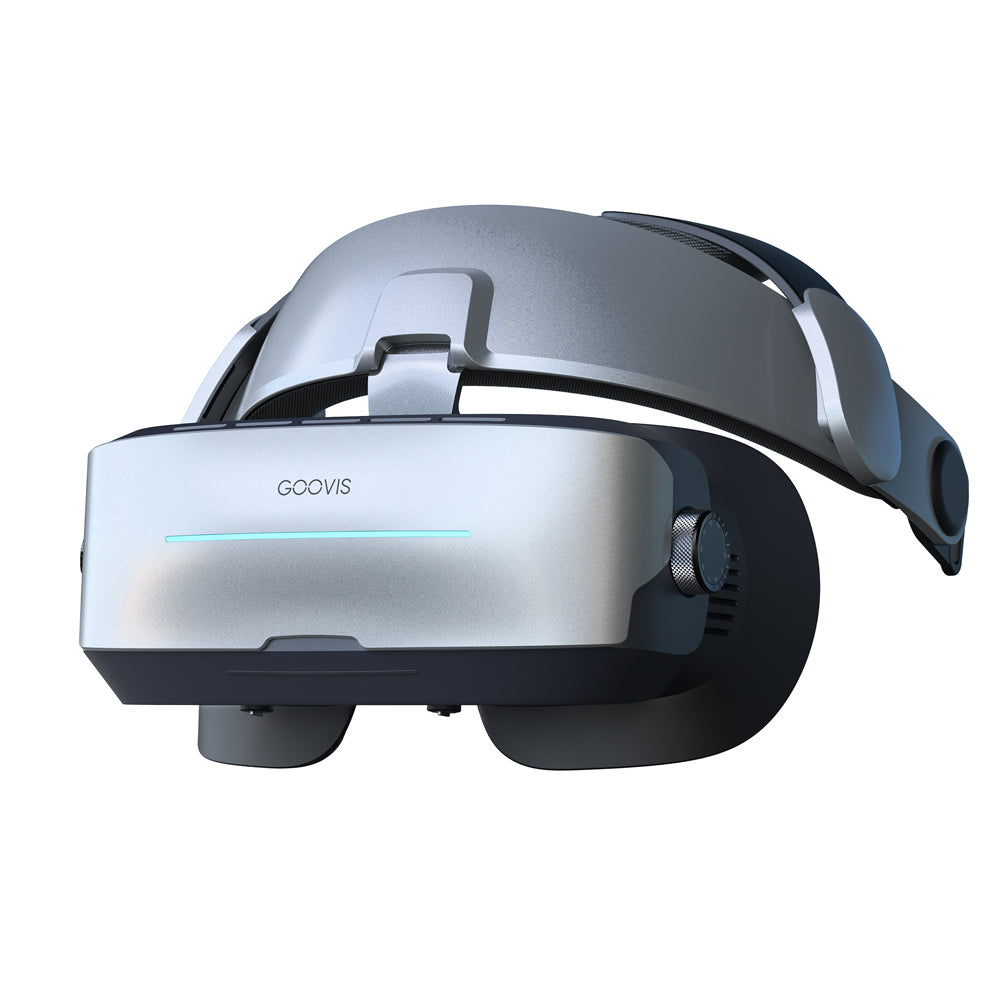What Define a GOOD Cinema Experience?
Right Screen Scale
Visual Clearity
Focus & Immersive
Lasting Comfort
Why Current Viewing Methods Fall Short?

Smartphone / Tablet
Easiest to access — just grab and start watching.
But small screens make it hard to catch detail or feel immersed, and fixed viewing postures quickly build fatigue before the movie even reaches the halfway point.

TV
TVs can deliver a strong visual impact — but to truly feel cinematic, the screen needs to go big. Yet as the size increases, the price rises sharply, making cinema-size TVs hard to justify for home use.

Projector
Achieving a large screen is easy — but a big image doesn’t always mean good image quality.
The projected image is highly sensitive to light, and even normal room lighting can wash out colors and weaken overall clarity.

Theater
Offers one of the best movie-viewing experiences — but there are still limits:
you can’t just walk in and watch whatever you want whenever you want, and your seat position determines what you actually see — too close, too far, or off to the side.

VR Headset
The visual clarity of most VR headsets often falls short, and their large FOV—designed for interactive use—puts extra strain on the eyes when watching movies, while their heavy weight makes it hard to stay comfortable through a full movie.

AR Glasses
AR glasses are lightweight and portable, but their display is easily affected by both ambient light and internal glare — making it difficult to maintain clear and stable visuals in everyday environments.
GOOVIS G3 Max — Made to End Viewing Compromises

True 3D Movie Support

Cinematic Visual Quality

Total Focus, Total Immersion

Built-In Vision Adaption

Lightweight & Long-Wear Design

















